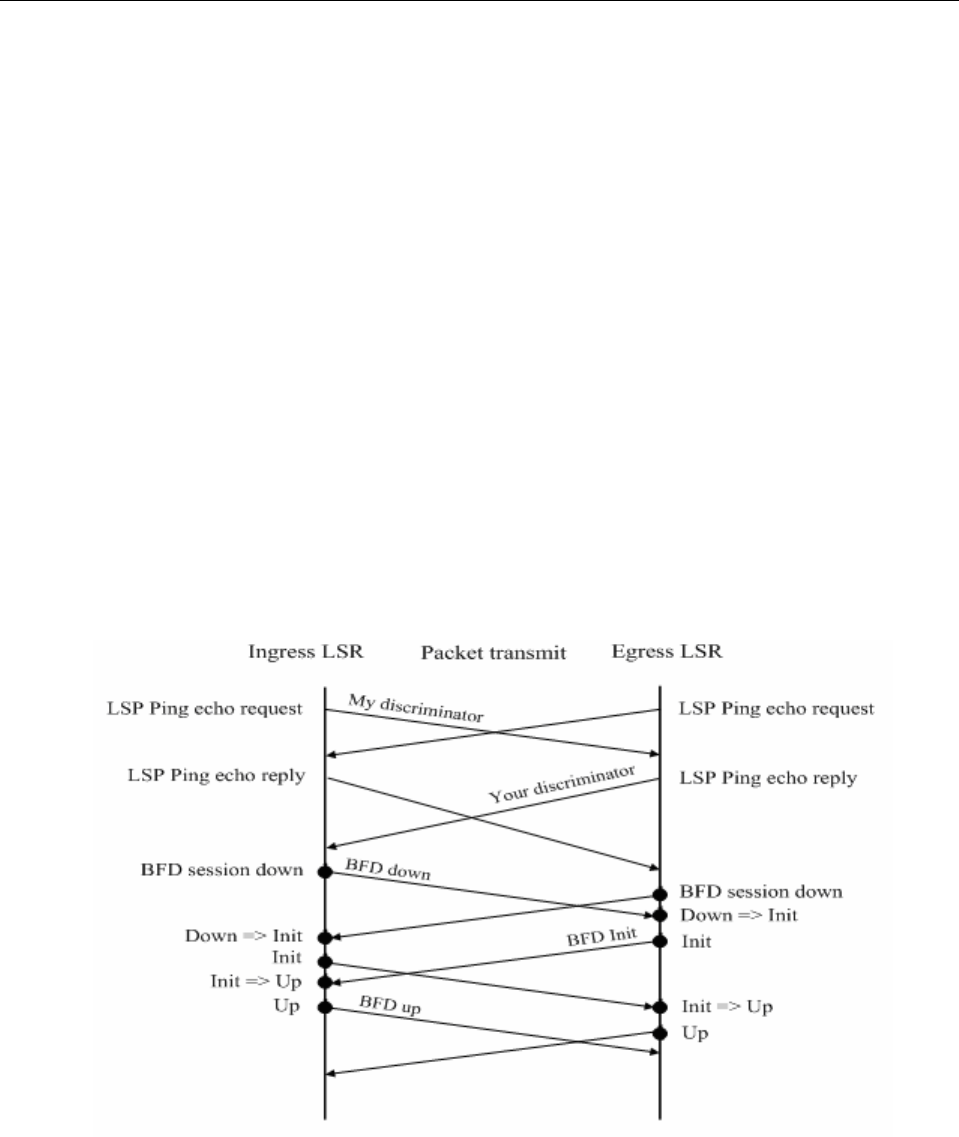
DES-7200 Configuration Guide Chapter 3 MPLS Reliability Configuration
3-31
can acquire your discriminator from the BFD control packet received. Hence, the active end
also has my discriminator (generated by active end) and your discriminator. After having the
discriminators of both ends, it will start to send BFD control packet to the passive end, and
thus the active end and the passive end enter into the initial stage of BFD session
establishment.
Here we shall point out that: when passive end receives the echo request packet, it can reply
with the echo reply packet (or choose not to reply). If passive end does send the echo reply
packet, then such packet must carry my discriminator (generated by passive end). In this
way, the active end can acquire your discriminator from BFD control packet or from the echo
reply packet.
For the passive end, before receiving the echo request packet sent from the active end, it will
not send BFD control packet to the active end.
The following chart describes the process of BFD session establishment with both ends being
active, BFD being used to detect the LSP from Ingress LSR to Egress LSR and BFD being used
to detect another LSP from Egress LSR to Ingress LSR.
Fig 24
z Before initiating BFD, Ingress LSR and Egress LSR will first need to learn your discriminator
and make sure the LSP state is "Up". As shown in Fig 2-1, Ingress LSR sends LSP Ping
echo request packet carrying my discriminator to Egress LSR. After receiving the echo
request packet, the Egress LSR will reply with echo reply packet carrying my discriminator


















